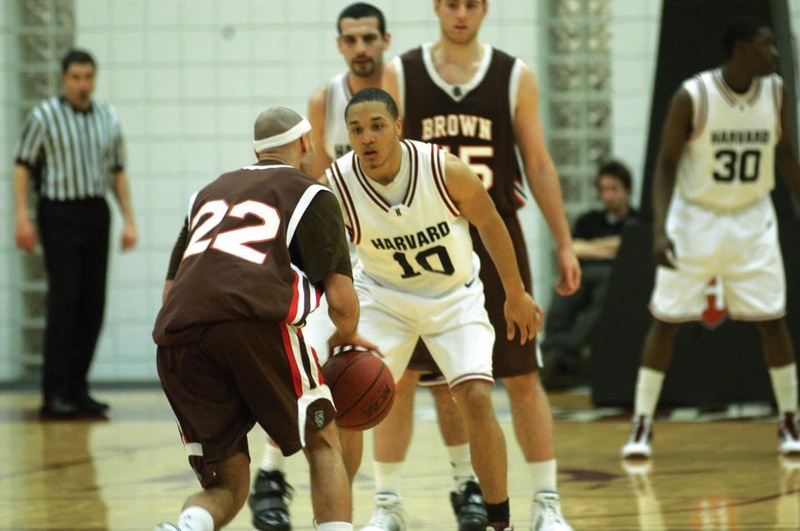
Although the impending expansion of the NCAA Tournament from 65 to 96 teams has been hotly contested, it would likely help Harvard qualify for March Madness for the first time since its last appearance in 1945.
Duke won the NCAA basketball championship on Monday, but the madness isn’t over yet. Last Thursday, Greg Shaheen, vice president of the NCAA, announced a proposal to expand future basketball tournaments from 65 to 96 teams.
The logistics aren’t finalized, and there are some hurdles like the CBS television contract that runs through 2013, but the feeling is that expansion is going to happen, perhaps as early as next year.
For the most part, fans and writers think the plan is a pretty bad idea. “If it ain’t broke, don’t fix it,” seems to be the go-to line.
But as a Harvard student, I say go for it, NCAA. Expand. And I’ll tell you my selfish reason: as a student from a non-power conference, I will care more about my school’s basketball program if 31 teams are added to the Big Dance.
As an Ivy League school, the Crimson’s only way into March Madness right now is to win its conference. But with 31 extra teams, Harvard could potentially get into the tournament with stellar non-conference performances and a second place league finish. This new possibility will open up interest in the Crimson’s non-league basketball games.
What I hope happens is that the selection committee puts a little extra weight behind some of these mid-major teams that don’t quite win their leagues. After all, March Madness is about the Cinderella, and there’s no better way to find Cinderella than to invite 31 more girls to the ball.
The talent pool in college basketball continually gets better, and I’d argue that the talent is being dispersed to create a decent amount of parity. As always, mid-major schools grabbed national headlines this year. Northern Iowa, from the Missouri Valley Conference, knocked off top-seed Kansas. Cornell, of the Ivy League, steam rolled to the Sweet Sixteen. Butler, from the Horizon League, made the NCAA finals.
Take Harvard as another example. The Crimson demonstrated it had the ability to hang with power conference teams like Boston College and UConn, and Harvard finished the season with an RPI of 105. There are mid-major teams out there that can compete at the highest levels, and putting some of those teams into the tournament would add to the excitement, not take it away.
What I hope doesn’t happen is that the selection committee invites a bunch of average teams from the major conferences to fill the expanded field. This year, eight Big East teams made the tournament. Is the NCAA planning on inviting the rest of the conference? I hope not.
Overall, the NCAA proposal might not be as bad as some people think. Critics argue that the expansion will hurt the mystique of the tournament, kill the regular season, and punish the student-athlete.
As for the mystique of the tournament, I don’t see expansion hurting it that much, as long as the selection committee focuses on adding top teams from the mid-majors and not average teams from the power conferences.
Also, I’m not convinced adding teams will kill the regular season. As Shaheen noted, the top eight teams in each region will get first-round byes under the new proposal. This rule adds an important incentive to regular season play.
The other major reason critics dislike the expansion is that they say the NCAA is choosing money over student-athletes, who will have to miss a few more days of class under the new plan.
First of all, in the grand scheme of things, two more days of missed class isn’t that big of a deal. But I do see where critics are coming from—it’s more of a grievance about the symbol of the NCAA as this big business.
This complaint entertains me—not because it’s wrong, but because people are acting like the business attitude is something new.
We all know that we’re in the age of the athlete-student and not the student-athlete. Just look at Kentucky, a team whose core players will likely all leave before graduation.
The NCAA has been a big business for a long time now and the CBS March Madness television deal is already valued around $700 million a year. As a reference point, the national rights for NBA content are worth an average of $950 million per year.
But the NCAA’s big business isn’t necessarily a bad thing. The money doesn’t take away from the youthfulness and emotions of the game, and a lot of the money the NCAA makes gets kicked back to the schools anyway.
Although the NCAA may be thinking with its wallet, that doesn’t make the expansion a bad idea. Especially for the Crimson and schools from mid-major conferences, the tournament expansion will stimulate more interest in college basketball.
Read more in Sports
Lin’s Hoop Dreams Lead Him to Portsmouth Invitational












